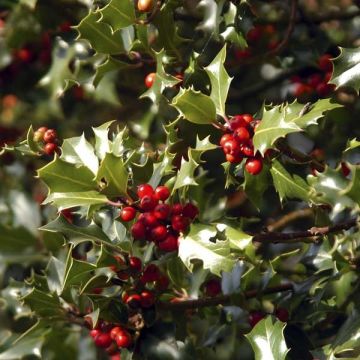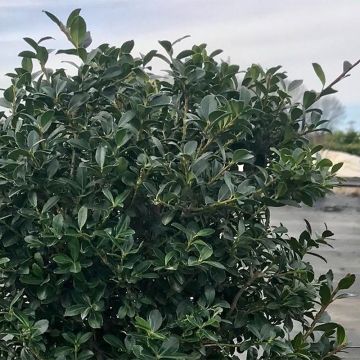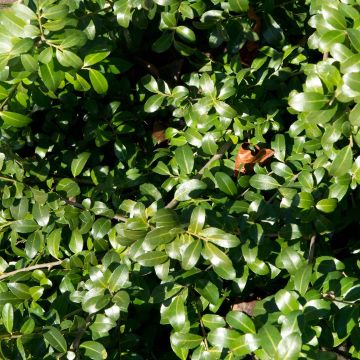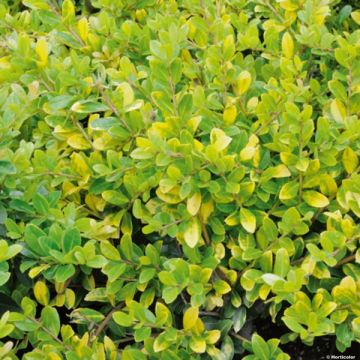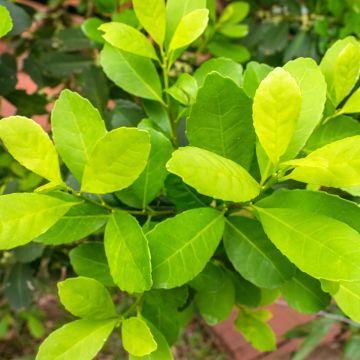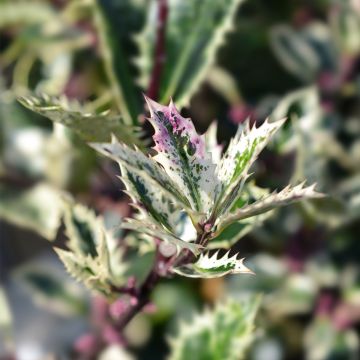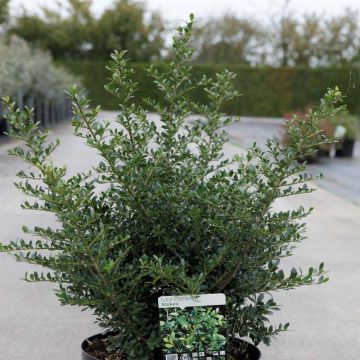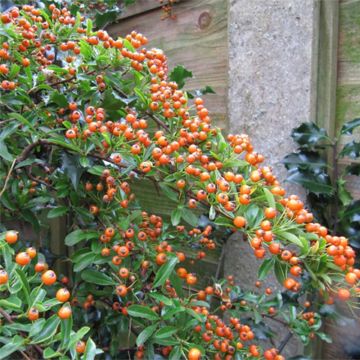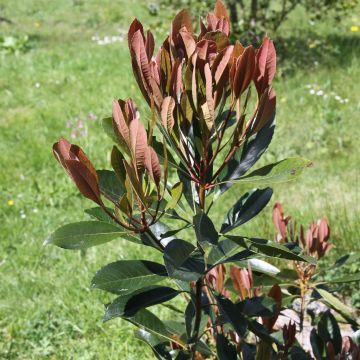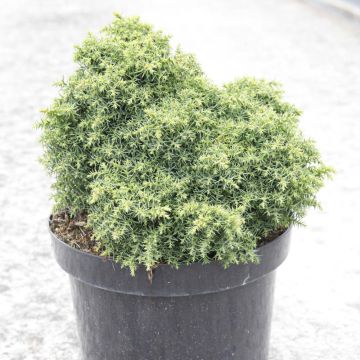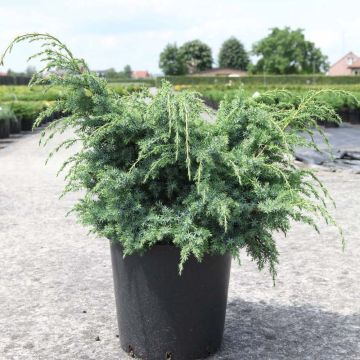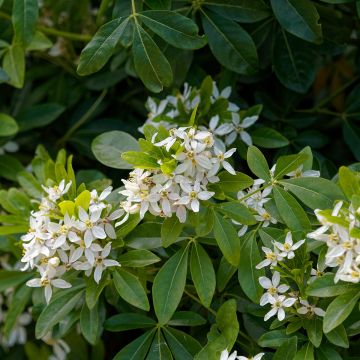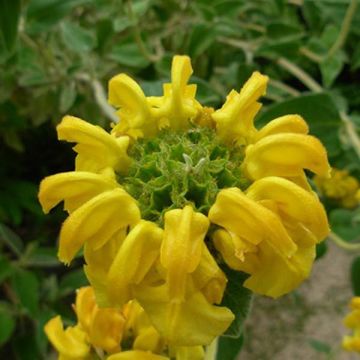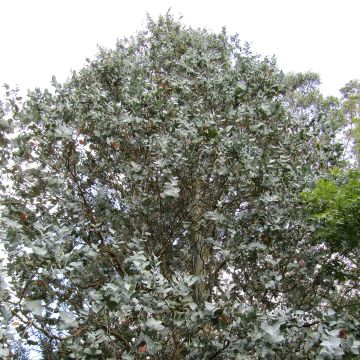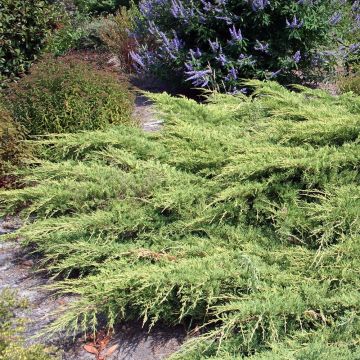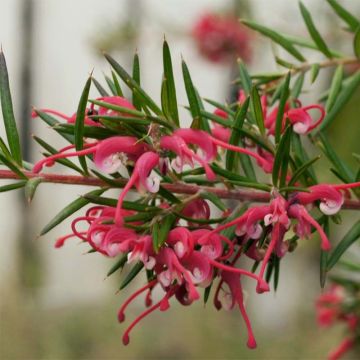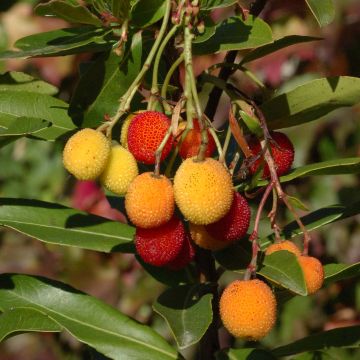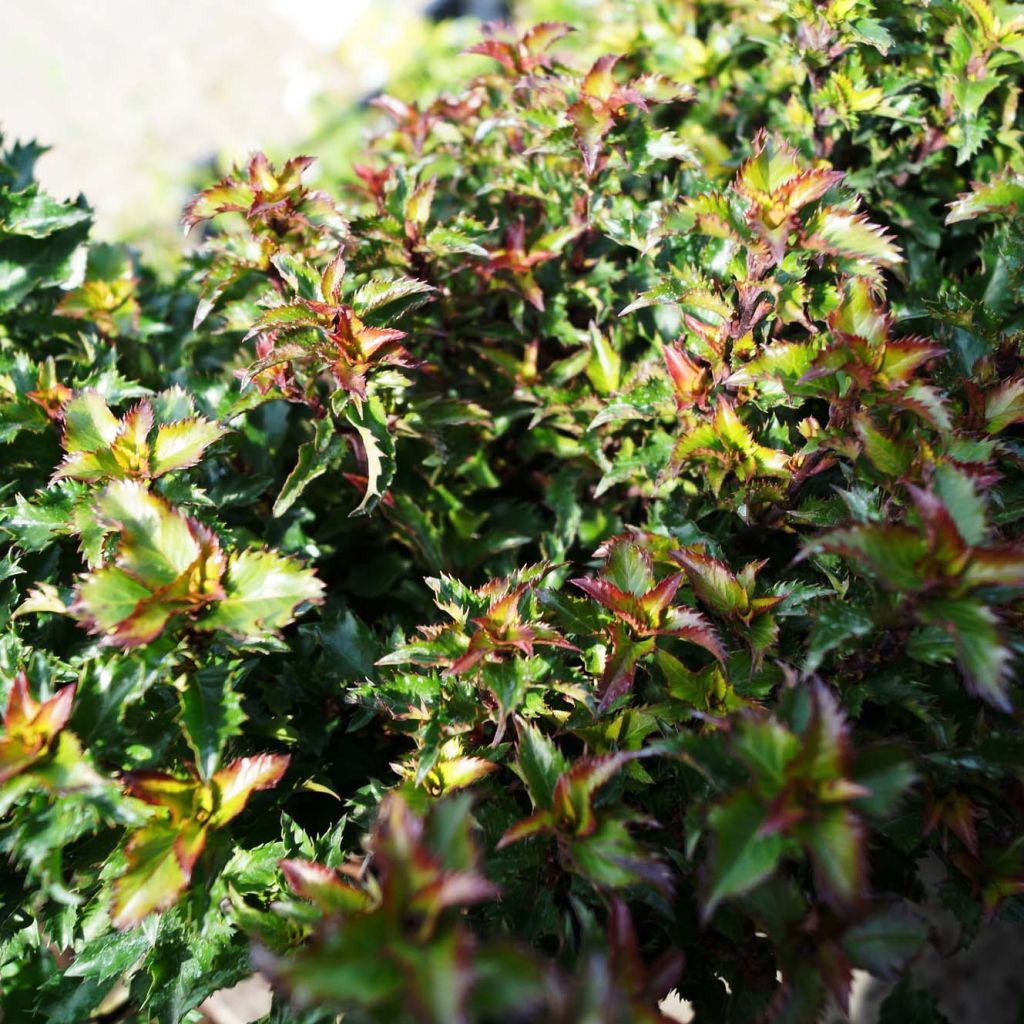

Ilex x meserveae MAGICAL Little Rascal Mondo - Blue Holly
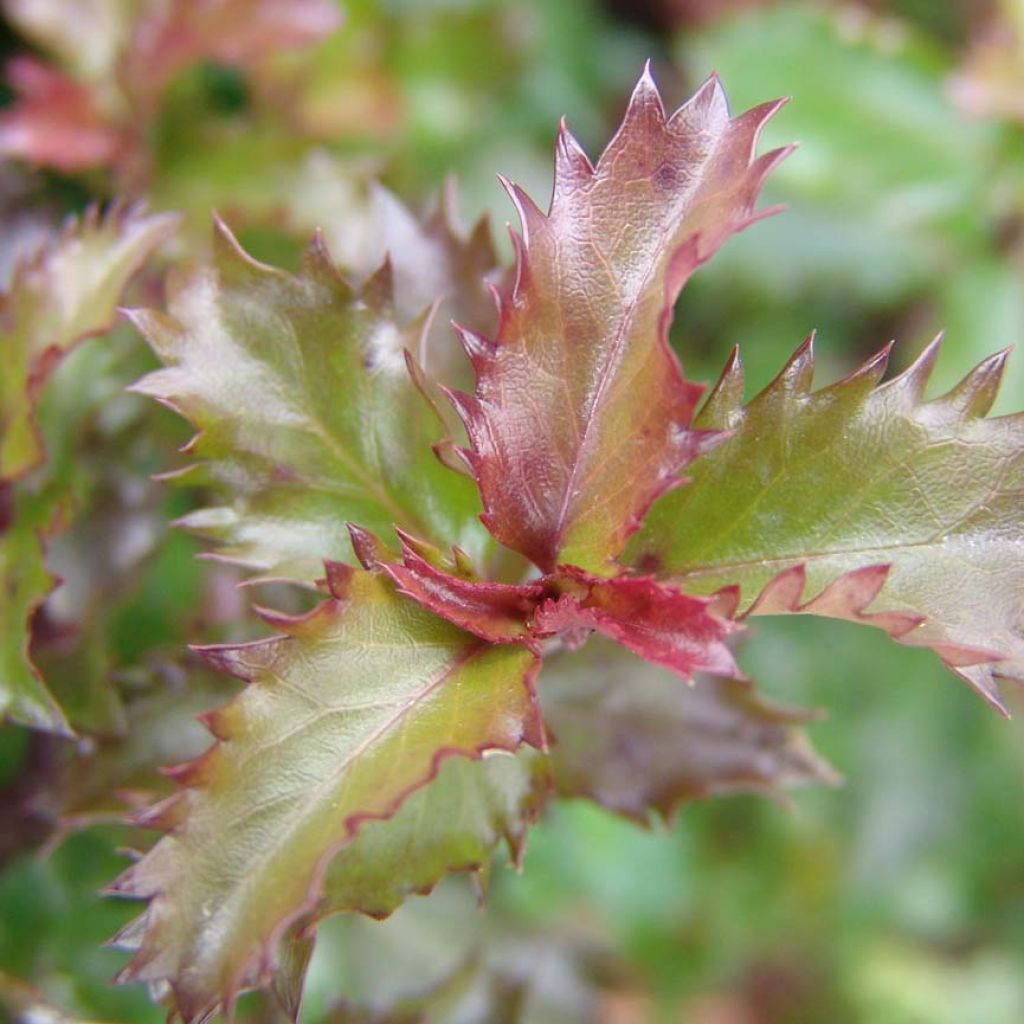

Ilex x meserveae MAGICAL Little Rascal Mondo - Blue Holly
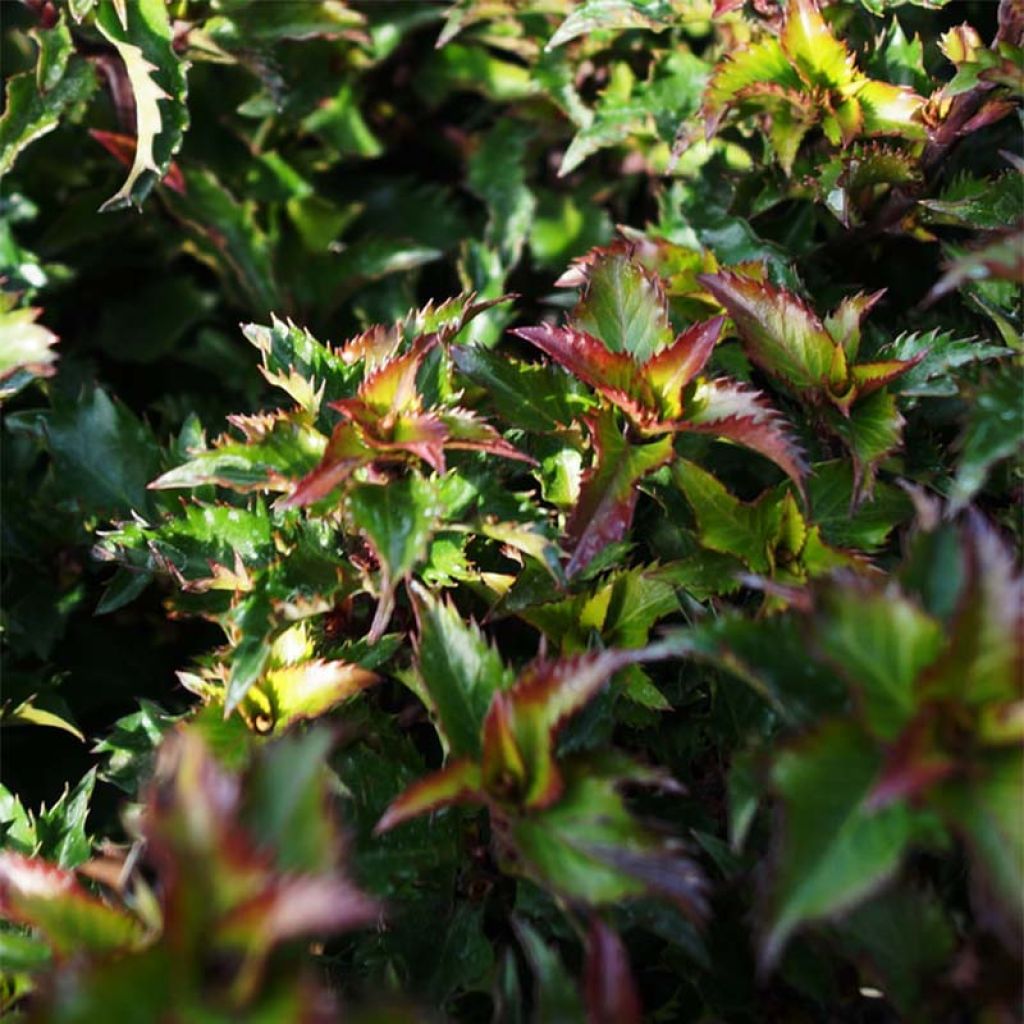

Ilex x meserveae MAGICAL Little Rascal Mondo - Blue Holly
Ilex x meserveae MAGICAL Little Rascal Mondo - Blue Holly
Ilex x meserveae MAGICAL® Little Rascal 'Mondo'
Blue Holly, Meserve Holly
This item cannot be shipped to the selected country
Delivery charge from €5.90
Delivery to Corse prohibited
More information
Schedule delivery date,
and select date in basket
This plant carries a 24 months recovery warranty
More information
We guarantee the quality of our plants for a full growing cycle, and will replace at our expense any plant that fails to recover under normal climatic and planting conditions.
From €5.90 for pickup delivery and €6.90 for home delivery
Express home delivery from €8.90.
Delivery to Corse prohibited: UE law prohibits the import of this plant from mainland France to Corse as part of the fight against Xylella fastidiosa. Please accept our sincere apologies.
More information

Does this plant fit my garden?
Set up your Plantfit profile →
Description
Ilex (x) merseveae Magical Little Rascal (Mondo) is an adorable dwarf cultivar of the Meserve Holly, well-suited for small spaces. This small evergreen shrub, less than one metre tall, with a lovely rounded and branched habit, bears a beautiful, dense foliage which is shiny dark green in colour and that turns purple with metallic reflections in winter, due to the cold. With numerous fine spines, it is actually not prickly and rather soft to the touch. It is well-suited for pruning, to create a regular ball or a majestic cone in the hands of a patient gardener, but it also shines when allowed to grow freely in a shrub bed to create the permanent structure of the garden.
The Meserve Holly is a horticultural hybrid obtained in the United States in 1964. It is a cross between Ilex aquifolium, the common holly of our forests, and Ilex rugosa, an almost prostrate Japanese species with rough-textured leaves. Perfectly hardy, this plant generally dislikes the presence of limestone in the soil. All these shrubs belong to the Aquifoliaceae family.
The 'Little Rascal' variety, which only produces male flowers, is a recent horticultural variety. This slow-growing shrub naturally has a rounded, dense, and regular habit. It reaches an average height of 80cm (31.5 in) at maturity, with a width of 90cm (35.4 in). It is also distinguished by its tough, oval, finely toothed and beautifully glossy leaves, which are light green when they first emerge, then become very dark green, and finally turn purple. All hollies are dioecious plants, meaning there are male and female flowers on separate plants. Only female flowers produce fruits, which are highly valued for their ornamental value. The Little Rascal holly produces small, insignificant but honey-producing flowers in spring, with a white-greenish color. Distinguishing the sex of the flowers requires a trained eye; they all have four white petals with purple tips, and their surface is waxy, but male flowers can be recognized by their four prominent yellow anthers, while female flowers have a short, oval green pistil. The same shrub can produce both male and female flowers, which cannot be pollinated. The seeds are dispersed by birds, who love the fruits.
The 'Little Rascal' holly is a slow-growing plant that plays a key role in the garden or on the terrace in winter, even in limited spaces. It can successfully replace boxwood in low hedges, but prefers limestone free soil. It can be planted in large borders or mixed with similarly sized shrubs to create the permanent structure of the garden: Mexican orange blossom, Nandina domestica, Myrtus tarentina, and Sarcococca can accompany it, for example, in an attractive, all year round, planting mix. It primarily dislikes excessive limestone, which causes its beautiful foliage to turn yellow, and prefers deep, fairly fertile soils. Hardy well beyond -15°C, it likes semi-shaded to sunny spots, such as under trees or on the edge of woodlands, in a large natural garden.
Hollies are both beloved and little-known plants. The genus includes nearly 800 deciduous or evergreen species, generally native to the temperate northern hemisphere. These ancient plants have experienced glacial periods and dry, hot periods in our climatic history, making them extremely adaptable and resistant. Their wood, white to cream, is very low in water, even when green. It is dense and heavy, but soft and easy to work with in cabinetmaking. It is also an excellent fuel for heating, even when green. Finally, their foliage and berries (inedible) are rich in caffeine. A tea is prepared with their leaves in the Black Forest.
Report an error about the product description
Ilex x meserveae MAGICAL Little Rascal Mondo - Blue Holly in pictures
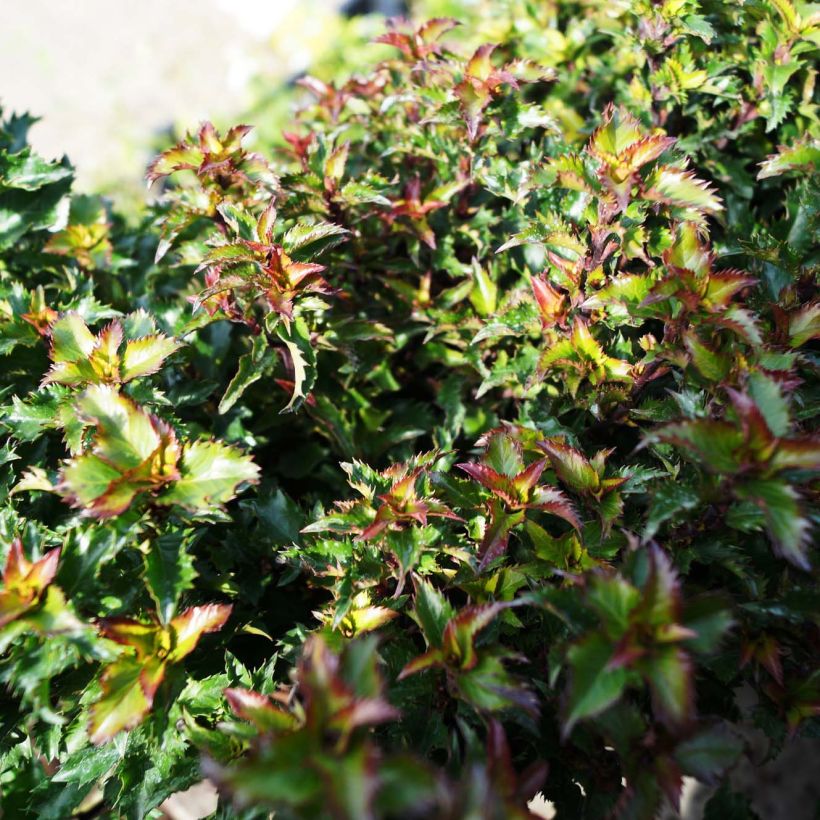

Plant habit
Flowering
Foliage
Botanical data
Ilex
x meserveae
MAGICAL® Little Rascal 'Mondo'
Aquifoliaceae
Blue Holly, Meserve Holly
Cultivar or hybrid
Other Ilex - Holly
Planting and care
To plant the Meserve Little Rascal holly, add some compost to the soil and incorporate it into your garden soil to slightly acidify it while enriching it. If your soil is rich in active limestone, the holly will tend to develop chlorosis (the foliage gradually turns yellow around the leaf veins) and eventually wither. Choose a sunny or semi-shaded location. Follow the watering instructions for the first 3 years with non-calciferous water, especially during prolonged drought, to help the shrub to establish itself. It will then manage on its own. This holly prefers cool and not too dry climates. Prune lightly in late winter or early spring to maintain its habit. The ilex can be attacked by holly leaf miners, white scale insects in spring, and mites and aphids in summer. Consider a preventive treatment at the beginning of the season.
Planting period
Intended location
Care
-
, onOrder confirmed
Reply from on Promesse de fleurs
Evergreen shrubs
Haven't found what you were looking for?
Hardiness is the lowest winter temperature a plant can endure without suffering serious damage or even dying. However, hardiness is affected by location (a sheltered area, such as a patio), protection (winter cover) and soil type (hardiness is improved by well-drained soil).

Photo Sharing Terms & Conditions
In order to encourage gardeners to interact and share their experiences, Promesse de fleurs offers various media enabling content to be uploaded onto its Site - in particular via the ‘Photo sharing’ module.
The User agrees to refrain from:
- Posting any content that is illegal, prejudicial, insulting, racist, inciteful to hatred, revisionist, contrary to public decency, that infringes on privacy or on the privacy rights of third parties, in particular the publicity rights of persons and goods, intellectual property rights, or the right to privacy.
- Submitting content on behalf of a third party;
- Impersonate the identity of a third party and/or publish any personal information about a third party;
In general, the User undertakes to refrain from any unethical behaviour.
All Content (in particular text, comments, files, images, photos, videos, creative works, etc.), which may be subject to property or intellectual property rights, image or other private rights, shall remain the property of the User, subject to the limited rights granted by the terms of the licence granted by Promesse de fleurs as stated below. Users are at liberty to publish or not to publish such Content on the Site, notably via the ‘Photo Sharing’ facility, and accept that this Content shall be made public and freely accessible, notably on the Internet.
Users further acknowledge, undertake to have ,and guarantee that they hold all necessary rights and permissions to publish such material on the Site, in particular with regard to the legislation in force pertaining to any privacy, property, intellectual property, image, or contractual rights, or rights of any other nature. By publishing such Content on the Site, Users acknowledge accepting full liability as publishers of the Content within the meaning of the law, and grant Promesse de fleurs, free of charge, an inclusive, worldwide licence for the said Content for the entire duration of its publication, including all reproduction, representation, up/downloading, displaying, performing, transmission, and storage rights.
Users also grant permission for their name to be linked to the Content and accept that this link may not always be made available.
By engaging in posting material, Users consent to their Content becoming automatically accessible on the Internet, in particular on other sites and/or blogs and/or web pages of the Promesse de fleurs site, including in particular social pages and the Promesse de fleurs catalogue.
Users may secure the removal of entrusted content free of charge by issuing a simple request via our contact form.
The flowering period indicated on our website applies to countries and regions located in USDA zone 8 (France, the United Kingdom, Ireland, the Netherlands, etc.)
It will vary according to where you live:
- In zones 9 to 10 (Italy, Spain, Greece, etc.), flowering will occur about 2 to 4 weeks earlier.
- In zones 6 to 7 (Germany, Poland, Slovenia, and lower mountainous regions), flowering will be delayed by 2 to 3 weeks.
- In zone 5 (Central Europe, Scandinavia), blooming will be delayed by 3 to 5 weeks.
In temperate climates, pruning of spring-flowering shrubs (forsythia, spireas, etc.) should be done just after flowering.
Pruning of summer-flowering shrubs (Indian Lilac, Perovskia, etc.) can be done in winter or spring.
In cold regions as well as with frost-sensitive plants, avoid pruning too early when severe frosts may still occur.
The planting period indicated on our website applies to countries and regions located in USDA zone 8 (France, United Kingdom, Ireland, Netherlands).
It will vary according to where you live:
- In Mediterranean zones (Marseille, Madrid, Milan, etc.), autumn and winter are the best planting periods.
- In continental zones (Strasbourg, Munich, Vienna, etc.), delay planting by 2 to 3 weeks in spring and bring it forward by 2 to 4 weeks in autumn.
- In mountainous regions (the Alps, Pyrenees, Carpathians, etc.), it is best to plant in late spring (May-June) or late summer (August-September).
The harvesting period indicated on our website applies to countries and regions in USDA zone 8 (France, England, Ireland, the Netherlands).
In colder areas (Scandinavia, Poland, Austria...) fruit and vegetable harvests are likely to be delayed by 3-4 weeks.
In warmer areas (Italy, Spain, Greece, etc.), harvesting will probably take place earlier, depending on weather conditions.
The sowing periods indicated on our website apply to countries and regions within USDA Zone 8 (France, UK, Ireland, Netherlands).
In colder areas (Scandinavia, Poland, Austria...), delay any outdoor sowing by 3-4 weeks, or sow under glass.
In warmer climes (Italy, Spain, Greece, etc.), bring outdoor sowing forward by a few weeks.

































